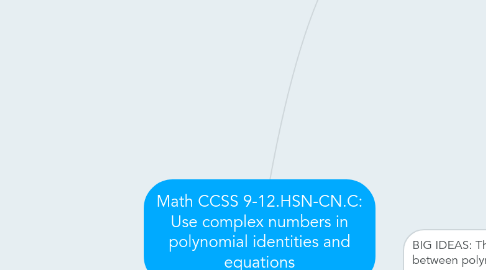
1. Ed Brandao
2. BIG IDEAS: There are links between polynomials and geometry. Complex numbers obviate this connection: the degree of a polynomial equation tells us how many solutions it has, provided we include both real and imaginary numbers.
2.1. OBJECTIVE 1: Solve quadratic equations with real coefficients that have complex solutions.
2.1.1. Scaffolding strategy: Pre-Teach Vocabulary
2.1.1.1. Preteaching vocabulary is very important in math, particularly in the context of international schools; students have different command of English and were probably taught math in different countries, schools and systems. Pre-teaching vocabulary insures everybody uses the same math terminology and is ready for the lesson.
2.2. OBJECTIVE 2: Extend polynomial identities to the complex numbers
2.2.1. Scaffolding strategy: Pause, Ask Questions, Pause, Review
2.2.1.1. Extending polynomial identities to the complex numbers assumes an enormous amount of prior knowledge: students have to know polynomial identities in the real case and be comfortable manipulating them. Complex number algebra is also assumed knowledge. In the context of international schools, students' knowledge is often patchy and use of this scaffolding technique is really non-optional!
2.3. OBJECTIVE 3:Know the Fundamental Theorem of Algebra; show that it is true for quadratic polynomials.
2.3.1. Scaffolding strategy: Use Visual Aids
2.3.1.1. For most of us, sight is the dominant sense. Using visual aids in math is a tried and true method to improve understanding of topics. How fitting it is, then, that the FTA, "the basic connection between algebra and geometry", is understood by some people as an algebraic statement and and by others in a much more geometric fashion! Using (interactive) graphs to explain the theorem combines the best of both worlds and make the connection explicit!
